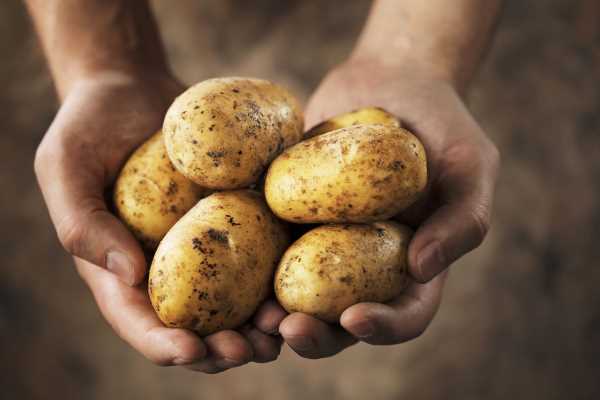TOMRA’s optical sorting technologies are just the thing for both potato growers and potato processors who are in pursuit of getting more value from their products in the current environment. For potato growers, optical sorting machines enhance food safety by performing the following tasks: removing foreign materials; delivering consistent product quality; minimising waste; and optimising throughput rates. On the other hand, for potato processors, sorters are able to achieve the following: accurately grade to specification; minimise false rejects and increase recovery rates to reduce waste; handle high throughputs; manage peaks in demand; reduce the need for manual interventions on the line and line downtime; and reduce the line’s total cost of ownership.
The war in Ukraine has caused global food shortages, as a result of supply chain disruptions. While their input costs have skyrocketed, discerning food producers should view this as an opportunity and not a challenge. They can seize the opportunity to invest in methods that can enable them to improve the quality of their products. This is because, given the low supply of food, prices have gone up and the surefire way through which farmers and food processing businesses can earn more revenue is through improving the quality of their output. The rule of the thumb is: The higher the quality, the more the value.
Improving the quality of the food products involves a number of painstaking processes. One of them is within grasp is improving sorting by using effective technologies.
Sensor-based sorting technologies
One of the world’s leading manufacturers and providers of sorting food sorting technologies, TOMRA is calling on potato growers and packers about adopting its flagship sensor-based technologies for their sorting requirements. For growers that also handle packing and processing in-house, the company offers solutions for a wide variety of potato products, fresh-packed and frozen. The solutions cover tasks ranging from potatoes just taken out of the ground or storage to fresh pack, chips (crisps), French Fries, other potato specialties (such as wedges, slices, and hash browns), and dehydrated flakes and granules.
Wide range of sensor-based sorters
TOMRA’s wide range of sensor-based sorting machines are particularly engineered to address challenges encountered in the contemporary food industry. Two amongst them have become the reference point for sensor-based sorting technologies are the TOMRA 3A and the TOMRA 5A.
The TOMRA 3A, the sorting machine most used by potato growers, uses high-resolution cameras and near-infrared (NIR).
The TOMRA 5A, specifically designed for potato processors, uses a combination of pulsed LED, camera, and NIR, performing targeted spectroscopy with 1mm precision. In this context, reference to Spectroscopy is the study of the interaction between matter and electromagnetic radiation as a function of the wavelength or frequency of the radiation.
Vast array of capabilities
Norman Smith, Area Sales Manager for Africa at TOMRA Food, states that the two sensor-based sorters demonstrate extraordinary capabilities in a wide range of sorting applications in demanding tasks in potato production.
The TOMRA 3A identifies zero-value green potatoes and distinguishes between organic matter (the crop) and inorganic matter (foreign materials). “The TOMRA 3A is able to identify good crops which might otherwise be mistaken for a soil clod because it is heavily coated in soil. Because of the time pressures of short harvesting seasons, this machine is designed to work at high capacity, often working at storage sheds at a rate of 100 tons per hour. As growers may store potatoes at more than one location, this machine is designed to be moved easily from shed to shed,” Smith explains.
The TOMRA 5A can be set to precisely alter the accept/reject levels for subtle defects, discolorations, and blemishes in the potatoes, and product size and shape. “The TOMRA 5A is noted for its superior removal of foreign materials, with a 98% removal rate and highly efficient detection of rotten potatoes and potatoes with defects. The TOMRA 5A can also recuperate lesser-quality potatoes for sale as lower-grade products, minimising waste and improving profitability,” Smith points out.
In a nutshell, through meticulous engineering, the sorters are equipped with the features that allow for capabilities for both growers and processors. For the former, it is foreign material and defect detection and removal; the latter, there are different features for different types of potato product – for example Sort-to-Length for French fries.
Guaranteed gains
For both potato growers and potato processors, there are guaranteed gains when the sensor-based sorting machines are used in recommended applications.
For potato growers, optical sorting machines enhance food safety by performing the following tasks: removing foreign materials; delivering consistent product quality; minimising waste; and optimising throughput rates. This makes daily operations easier and improves efficiency and profitability. Optical sorters are also critical to diminishing the dependence on manual labor.
For potato processors, sorters are able to achieve the following: accurately grade to specification; minimise false rejects and increase recovery rates to reduce waste; handle high throughputs; manage peaks in demand; reduce the need for manual interventions on the line and line downtime; and reduce the line’s total cost of ownership. Ultimately, the end result is improved efficiency and profitability, as well as protection against the risk of product recalls and reputational damage.
Long-term view
In these tough economic times, price is regarded as the main factor in decision making. However, Smith tells grain producers to take a long-term view when considering investment in seed sorting beyond the initial high cost. “Sorters are an investment that pay back very well. By increasing throughputs, improving yields, and reducing waste, they increase profitability. In addition, by safeguarding food safety, they protect the most valuable of all business assets, reputation. Small wonder, many growers and packers around the world have invested in optical sorters after seeing the bigger picture.”
Wise choice prior to purchasing
While the effectiveness of sensor-based sorting technologies has been proved beyond doubt, it is important for potato growers and processors to do their homework before rushing into purchasing. Hasty decisions can result in an irretrievable loss of capital.
In view of this, TOMRA consistently emphasises the importance of exhaustively gathering information on the sensor-based sorters they may be interested in. “Choose wisely by asking lots of questions and asking to see proof of capabilities. Don’t make a purchasing decision solely based on price. It’s crucial to also remember how well the machine will perform and pay back on the investment you made in it. This is over and above the following: the level of equipment training, customer support, and servicing that you are likely to receive; on the equipment’s reliability, and on total cost of ownership,” Smith says.
TOMRA bends over backwards to help the customer make a wise decision. Its approach is informed by the belief that a very powerful way of convincing potato growers and packers of the huge benefits of using sorting machines is practical demonstration. “We show clients machines in action and let them see the results with their own eyes. We arrange machine demonstrations which can be viewed in person or remotely online. These demonstrations can use infeed materials supplied by the potential customer or materials very similar to those the customer deals with. The results of these tests are precisely quantified and never fail to impress customers,” Smith elaborates.
Besides, growers and packers are convinced of the merits of sorting machines when they talk to other businesses that use them. These businesses quickly come to appreciate the operational and commercial benefits of using optical sorting machines. Thanks to its prominent market position, TOMRA can proudly count on manifold farmers as testimonials of the superior performance of TOMRA 3A and TOMRA 5A.
TOMRA prides itself on providing world-class expertise with local customer support. Its office in Johannesburg acts as a local service hub, with prompt supply of spare parts and local service engineers available to support customers in southern Africa.
Customer’s confirm the efficacy of TOMRA’s sorters
Information from customers’ experience based on using TOMRA’s sensor-based sorters has proved the efficacy of TOMRA sorting machines. This is mainly potato growers and processors around the world who are very satisfied with TOMRA’s sorting solutions. Amongst numerous others are Gumz Farms of Wisconsin, USA, which is a potato grower and packer, and Flandre Pomme de Terre in France, a family-run grower and packer. These two businesses have both successfully developed their businesses using TOMRA sorters.
New solutions in sensor-based sorting technologies
TOMRA is constantly developing new machines or upgrading existing machines to keep abreast of clients’ needs. Recently, it released TTOMRA 3A and TOMRA 5B, in addition to TOMRA Insight, the web-based data platform.
The TOMRA 3A and TOMRA 5B offer the best of both worlds: state-of-the-art technologies which are well-proven.
TOMRA Insight, the web-based data platform, is fairly new, and will be of interest to potato processors. It gathers data in near real-time and stores this securely in the cloud so that it can be accessed from anywhere via web-based desktop and mobile devices. Because TOMRA Insight continuously measures the quality of the processing line’s material stream, operators can make prompt adjustments to machine settings in response to changes in material composition on the line. Additionally, as TOMRA Insight provides deep-dive data that wasn’t previously accessible, managers can now make operational and business decisions based on more complete information.









